Hunger – The Universal Motivator
Most migrant birds are starting to return to their summer territories. Why do they come back?
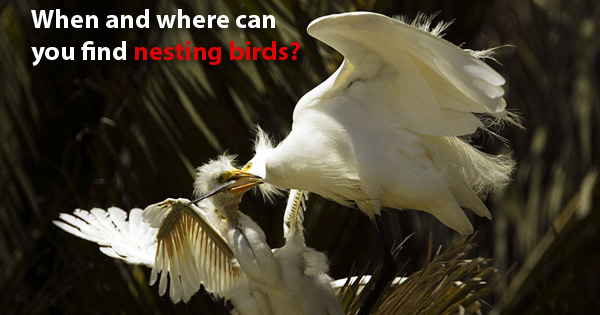
Food. Those summer territories have more of it, and less competition for what’s there. And if there’s abundant food, it’s also a good place to raise a family.
Reuse That Nest
You may see some raptors return to the same territory to reuse the same nest year after year. I used to find the same osprey nesting on a tufa tower in Mono Lake’s South Tufa area in California. The only catch was the need for about 1000mm to shoot – that tower was in the lake, inaccessibly far away. The osprey would fly to nearby freshwater lakes and reservoirs to hunt, and return to the tower in safe but fishless Mono Lake to eat it or feed pieces to nestlings.
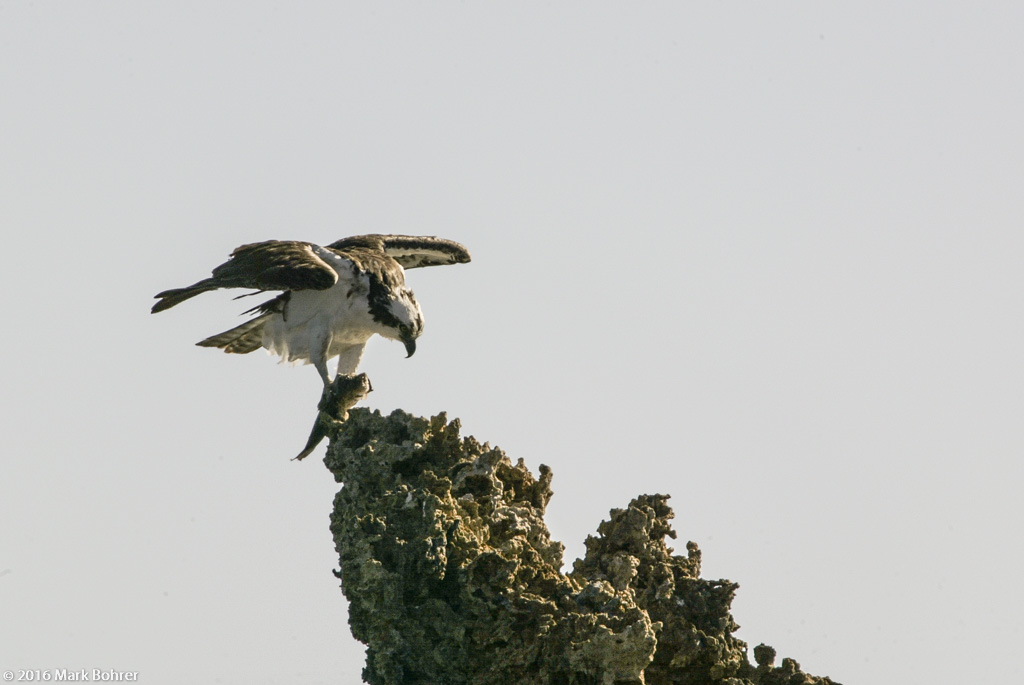
Osprey and meal, Mono Lake South Tufa, California
Anna’s hummingbirds are easier to get close to. Hummers may have three broods of young every year. Though they usually don’t reuse nests, they’re very territorial – you may find a second or third-brood nest in the same general vicinity as the first. They will reuse nest material from the earlier nest.

Anna’s hummingbird parent feeding nestlings, Palo Alto Baylands, California
Colony Nesters
Some birds don’t migrate – and they return to the same nesting location every year. 50-60 pairs of snowy egrets, great egrets and black-crowned night herons decided to nest in the palm trees by Palo Alto Baylands’ duck pond for several years. Egrets and night herons are colony nesters – you’ll see many pairs feeding young right next to each other.

Feeding the kids – Snowy egrets, Palo Alto Baylands, California
Egrets will display colored lores – the area around the eyes – in colors they won’t have any other time of year. Other birds’ breeding plumage – their feather colors – will be unique and usually brighter too.
Cliff swallows also nest in colonies – but they build mud gourd nests, one bill-full of mud at a time. And they build new nests annually, since the old ones generally don’t hold up for an entire year.
Timing – When?
Egrets, night herons, and most other birds return to nesting territories by mid-March. Egret young are altricial – they can’t feed themselves, so Mom and Dad have to do it. You may see egret nestlings on nests into late June, but your best bet for feeding shots will be earlier, starting about mid to late April.
Other birds like black-necked stilts and American avocets are precocial – that is, their young are able to feed themselves at an early age. You’ll see their chicks walking around a marsh looking for food. When a predator approaches, the parent bird will try to make a lot of noise and distract it away.
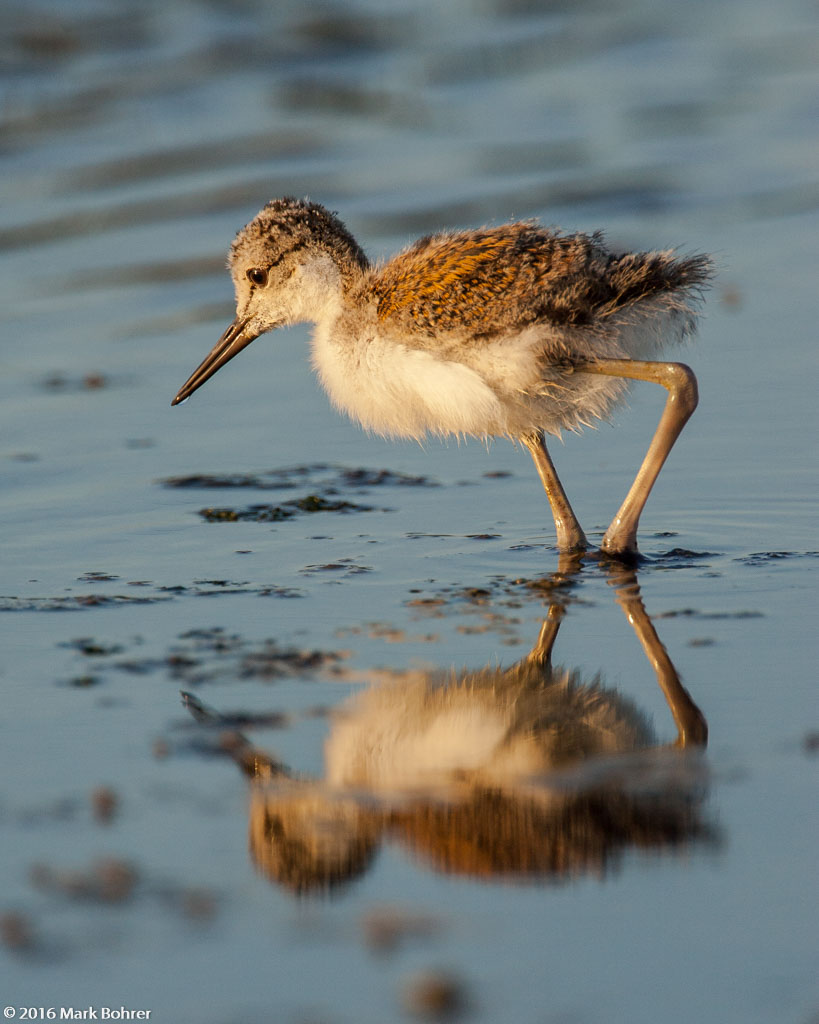
Black-necked stilt chick, Palo Alto Baylands
Ask A Native Guide
How do you find nesting birds?
Ask a native guide, someone who’s familiar with the area. This could be members of the local Audubon Society chapter, or a wildlife photography club. Sometimes a park’s rangers will know too, but they may not always tell you. This happens because a nest is a bit too accessible. Too much disturbance may cause a parent to abandon young nestlings.
And rangers will close known nesting areas during nesting season. Part of Santa Clara County, California’s Sanborn Park closes spring to late summer every year for this reason.
Sometimes there are well-known locations birds return to every year. New Mexico’s Bosque del Apache is one of these, though it can also be good for sandhill cranes and snow geese foraging in winter. I’ve included a short list of California locations at the link.
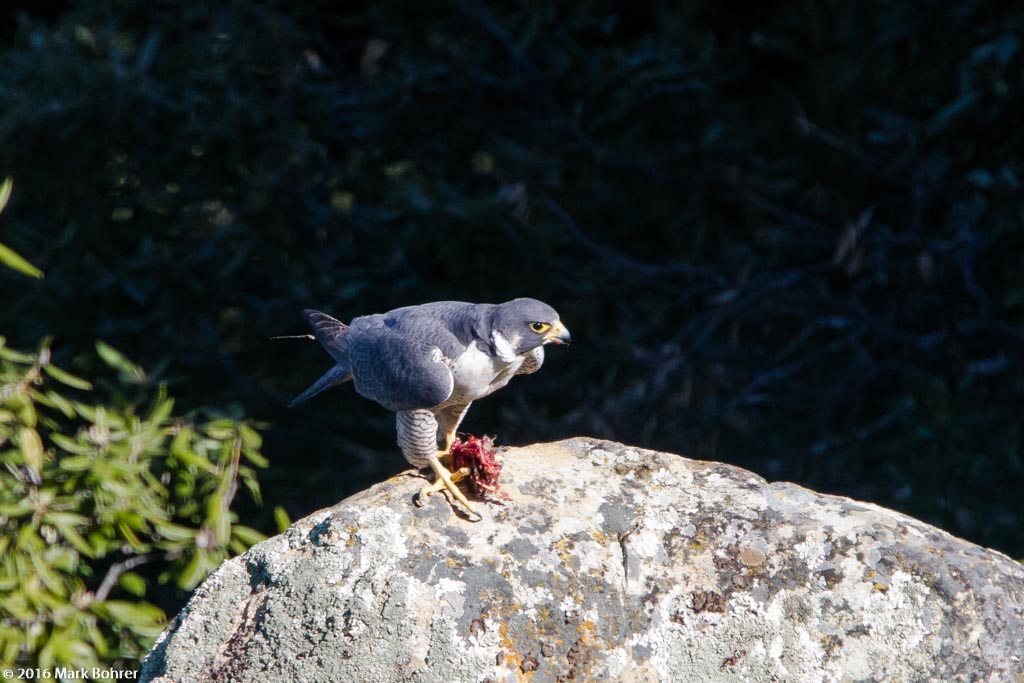
Hungry Peregrine falcon with meal, Sanborn County Park, California
Know Their Habits And Wait For Distractions
Once you find them, how do you get close?
Research your target species’ habits and behavior. Your research will also suggest activities you might want to capture. Then approach when they’re distracted by one of those activities, like courtship, building nests, or feeding nestlings.
Watch for unusual behavior. I was photographing a much-smaller northern mockingbird mobbing a red-tailed hawk to get it to leave. Smaller birds don’t like predators in their territories, and will often fly at them to annoy them. Just before taking off, the red-tail leaned forward and lightened his load. I had read about this, but had never seen it happen. I was ready, so I got the shot.
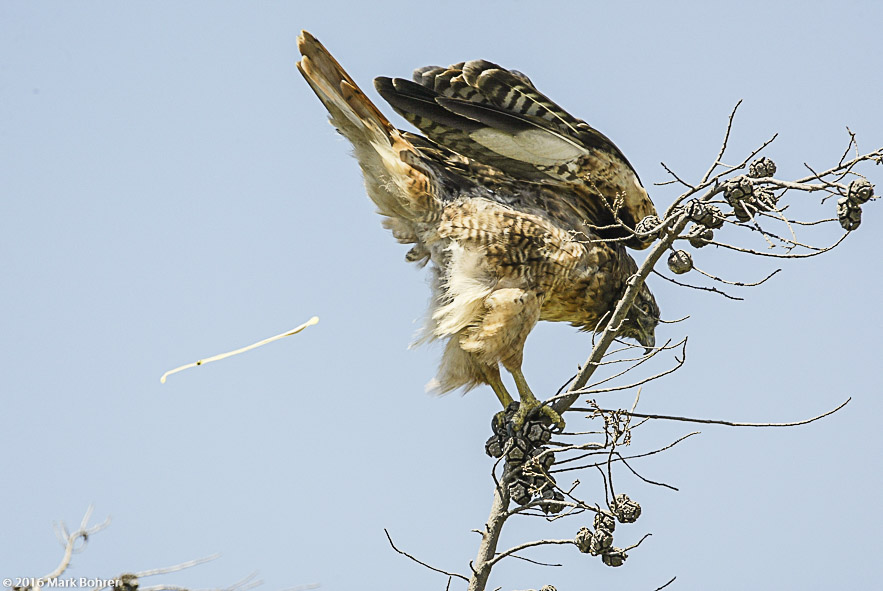
Red-tailed hawk lightening up pre-flight, Shoreline at Mountain View, California
Pre-Visualize For Good Backgrounds
Remember, blue sky is boring. After awhile, you can anticipate birds taking off and landing on nests, or flying low over trees on their approach. I avoid flight shots against plain blue backgrounds.
Read A Good Book Or Two
Helpful resources include Sibley’s Guide to Birds of Western North America, his similar guide to birds of Eastern North America, Sibley’s Birding Basics, The Sibley Guide To Bird Life and Behavior, Pete Dunne on Bird Watching, and Nests, Eggs and Nestlings of North American Birds. There are other books, but these are the ones that brought me up to speed.
Look for a local guidebook to birds in your area for species you can expect to find.
Walk Softly And Carry A Big Lens
I know wildlife shooters who won’t go out with anything shorter than 600mm on a crop sensor camera. I think 400mm is a full-frame minimum, but you’ll need to be intimately familiar with your subject’s habits and location to use it. I wandered around Palo Alto Baylands and the adjacent Shoreline at Mountain View enough in different seasons to know who did what when and where. I also visited Mono Lake South Tufa enough to know where to find osprey nests and when to expect violet-green swallows.
Bring Another Camera With A Shorter Lens
It pays to have a second camera handy with a shorter focal length mounted. At Palo Alto Baylands one nesting season, I happened to be there when a snowy egret nestling fell out of its nest. Baylands ranger Bonnie Natrass put on her heavy gloves, went behind the fence around the palm trees, and rescued the little guy. I had my second camera with 16-35mm zoom ready to capture her with the rescued bird.

Ranger Bonnie Natrass and rescued egret nestling, Palo Alto Baylands, California
Want more on getting close for great wildlife pictures?
Download Photographing Wildlife – Stealth Approach For An Intimate View, my free guide to wildlife photography.
Bosque Del Apache National Wildlife Refuge – 1001 Highway 1, San Antonito, New Mexico 87832
Mono Lake South Tufa State Natural Reserve – US-395, Lee Vining, CA 93541
Palo Alto Baylands, California – 2775 Embarcadero Way, Palo Alto, CA 94303
Sanborn County Park, California – 16055 Sanborn Rd, Saratoga, CA 95070
Shoreline at Mountain View, California – 3070 N Shoreline Blvd, Mountain View, CA 94043
|









Recent Comments